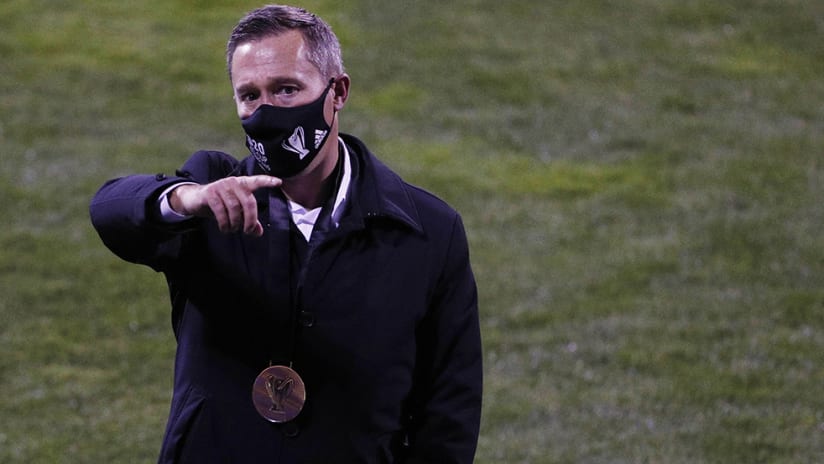The 2015 Fantasy MLS rules were released last week, and one question has garnered most of the attention: How are the price changes going to affect the season?
Worry not, my fellow fantasy fans. I’ve dug around in the data, and I have plenty of interesting discoveries to share. First off, if you haven’t taken a look at Andrew Winner’s guide to transfers, now would be a good time to get up to speed.
Let’s take a look at the price change rules a little bit closer, since there were some questions about the peculiars of how the calculations will be done.
Price Changes Rules Clarification
"A player's price will change if their match score significantly differs from the average match score of other players in the same position. This average score is calculated on a round basis and only includes players who played at least 45 minutes."
The first thing to note here is that player prices will change for each match played. This means players who participate in double-game weeks could potentially be affected by both match results.
As the round progresses, the prices will fluctuate in real-time with the live results of the matches. The average match score for each position is done on a round basis, though, which means that the final result of all of the price changes for the round will not be known until the last match is played.
At that time, the prices will be finalized, before the next transfer window opens for managers. One other interesting tidbit: the average scores for each position will be rounded to the nearest whole number before being compared to each player’s match score.
Looking Back at 2014
Based on this information, the biggest piece to the puzzle is finding out the average scores by position for players with at least 45 minutes in each of the rounds. Here is the frequency of the average scores for each position in the 33 rounds of 2014 Fantasy MLS:
Score |
GKP |
DEF |
MID |
FWD |
2 |
3% |
3% |
0% |
0% |
3 |
0% |
18% |
3% |
6% |
4 |
45% |
70% |
85% |
55% |
5 |
48% |
9% |
12% |
36% |
6 |
3% |
0% |
0% |
3% |
Small Chance for Big Swings
Based on the 2014 results, players would have to score zero points or less and play at least 45 minutes to even have a chance of being slapped with a non-red card $0.2 price drop. The $0.2 price increase is slightly more probable, but would likely take 10-plus points to achieve. Remember that the 45-minute rule only applies to decreases – super-subs that come in late to a match but do not play at least 45 minutes can still gain value.
Small Price Adjustments Incoming!
The $0.1 price decrease will be more common; it’s almost guaranteed for players that play at least 45 minutes and score only one point in a match. Scoring two points doesn’t necessarily keep goalkeepers or forwards safe, either. Here’s a breakdown of the probability of a price decrease given a certain match score and position:
Score |
GKP |
DEF |
MID |
FWD |
0 |
97% |
97% |
100% |
100% |
1 |
97% |
79% |
97% |
94% |
2 |
51% |
9% |
12% |
39% |
3 |
3% |
0% |
0% |
3% |
On the flip side of that, the magic number for a $0.1 price increase will be around seven to eight points. A forward whose only contributions are one goal scored and 60+ minutes of play (7 total points) would have only seen a price increase 61 percent of the time in 2014. Defenders that secured a clean sheet, two points for the time played, and one additional point would have been three points above the average score 91 percent of the time.
Score |
GKP |
DEF |
MID |
FWD |
5 |
3% |
3% |
0% |
0% |
6 |
3% |
21% |
3% |
6% |
7 |
48% |
91% |
88% |
61% |
8 |
97% |
100% |
100% |
97% |
Conclusions
Defenders seem to be slightly more protected from $0.1 price decreases and have a slightly higher chance of securing $0.1 price increases. However, midfielders and forwards have more of an opportunity to scoring 10-plus points and gain a $0.2 increase.
Now that you’re armed with this information, will it affect your selections?












